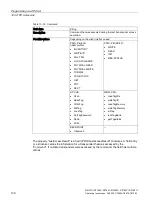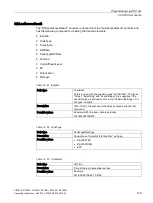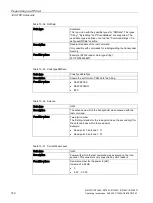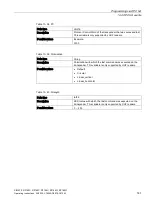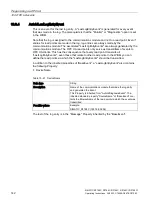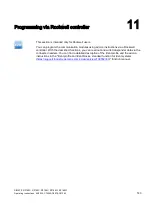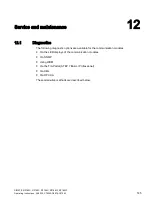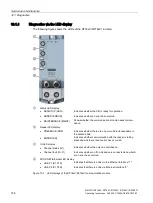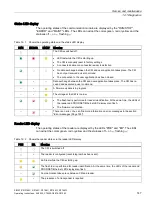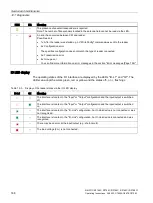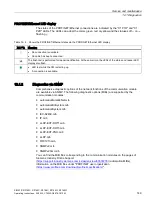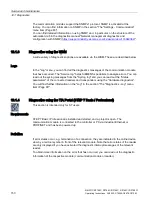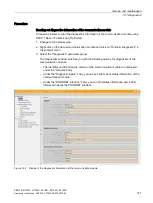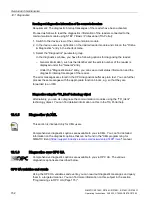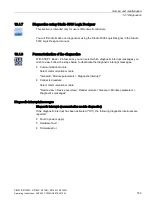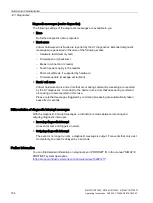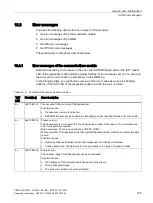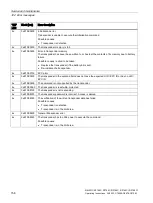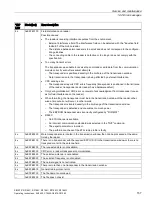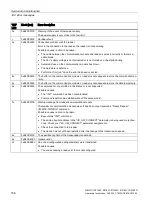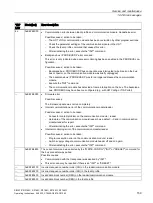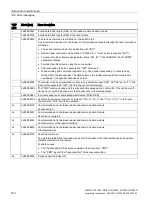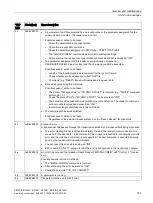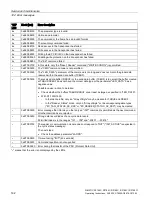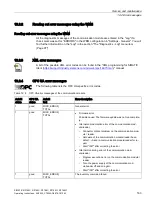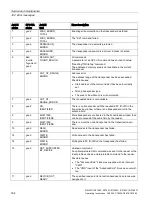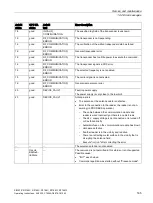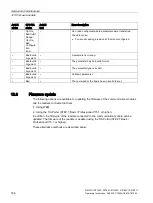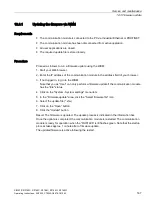
Service and maintenance
12.1 Diagnostics
SIMATIC RF185C, RF186C, RF188C, RF186CI, RF188CI
152
Operating Instructions, 04/2020, C79000-G8976-C512-03
Reading out diagnostics information of the connected readers
Requirement: The diagnostic interrupt messages of the reader have been activated.
Proceed as follows to read the diagnostics information of the readers connected to the
communication module using STEP 7 Basic / Professional (TIA Portal):
1.
Switch to the device view of the communication module.
2.
In the device overview, right-click on the desired reader module and click on the "Online
& Diagnostics" entry in the shortcut menu.
3.
Select the "Diagnostics" parameter group.
In the diagnostics window, you have the following options for diagnosing the reader:
–
General information, such as the identifier and the article number of the reader is
displayed under the "General" entry.
–
Under the "Diagnostic status" entry, you can see current status information and the
diagnostic interrupt messages of the reader.
The error messages are stored in the CPU diagnostics buffer as plain text. You can further
process these messages with the appropriate function blocks, e.g. so that they are
forwarded to an HMI.
Diagnostics using the "TO_Ident" technology object
Alternatively, you can also diagnose the communication modules using the "TO_Ident"
technology object. You can find detailed information on this in the TIA Portal help.
12.1.5
Diagnostics via XML
This section is intended only for XML users.
Comprehensive diagnostics options are available to you via XML. You can find detailed
information on the diagnostic options that can be found in the "XML programming for
SIMATIC Ident (
https://support.industry.siemens.com/cs/ww/en/ps/14971/man
)" manual.
12.1.6
Diagnostics over OPC UA
Comprehensive diagnostics options are available to you via OPC UA. The various
diagnostics options are described below.
OPC UA variables and events
Using the OPC UA variables and events, you can read out diagnostic messages and query
them in a targeted manner. You can find more information on this subject in the section
"Programming via OPC UA (Page 115)".

